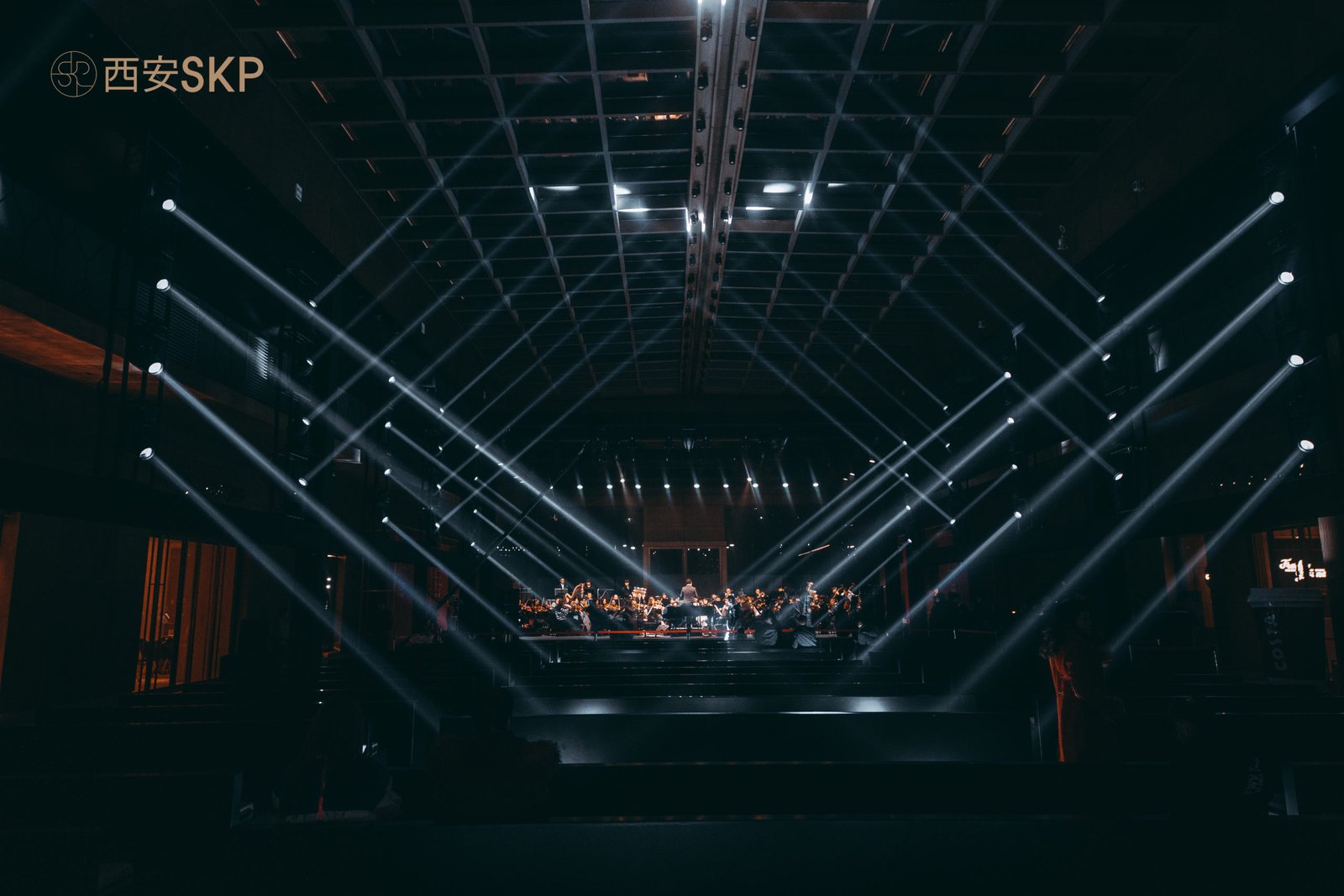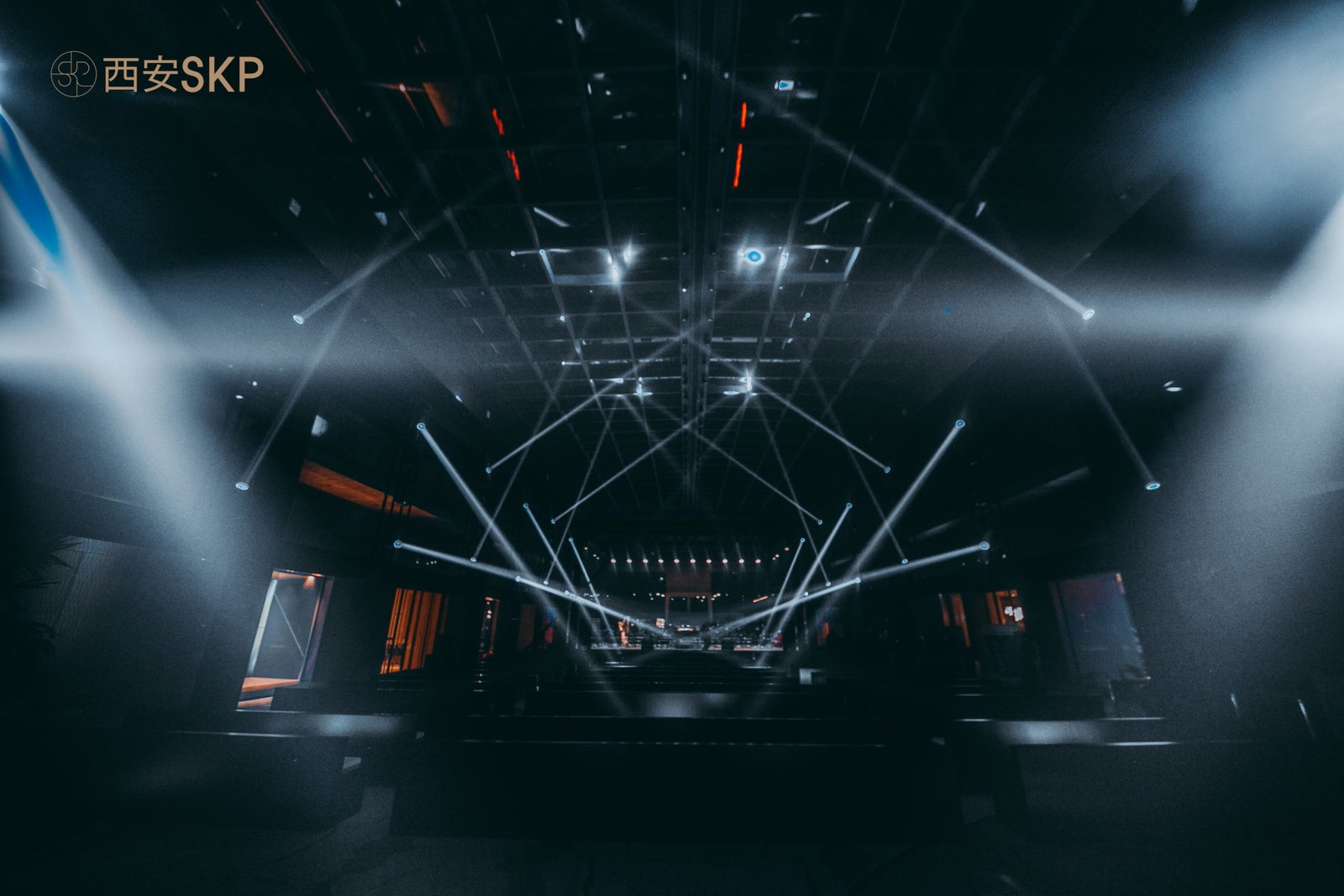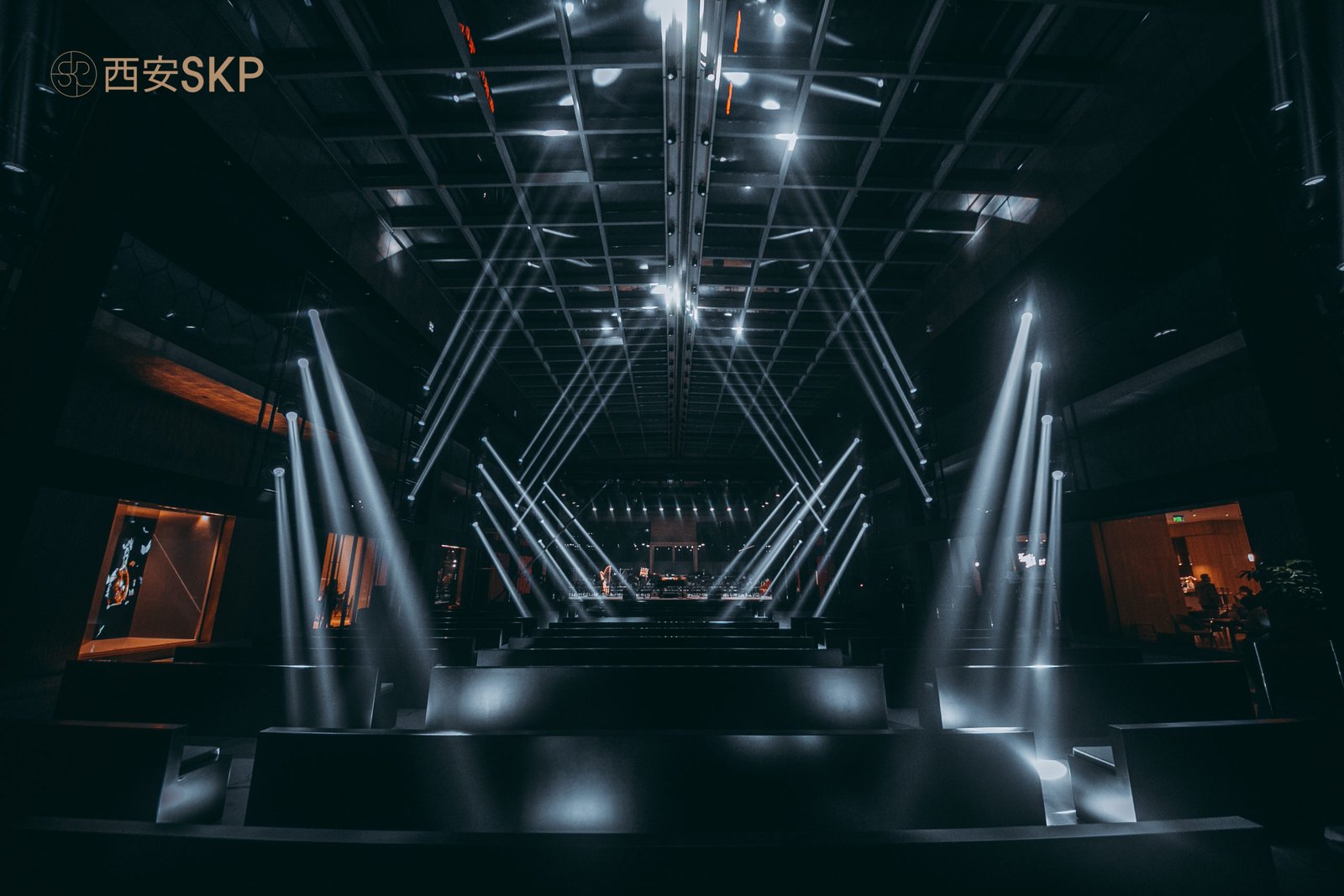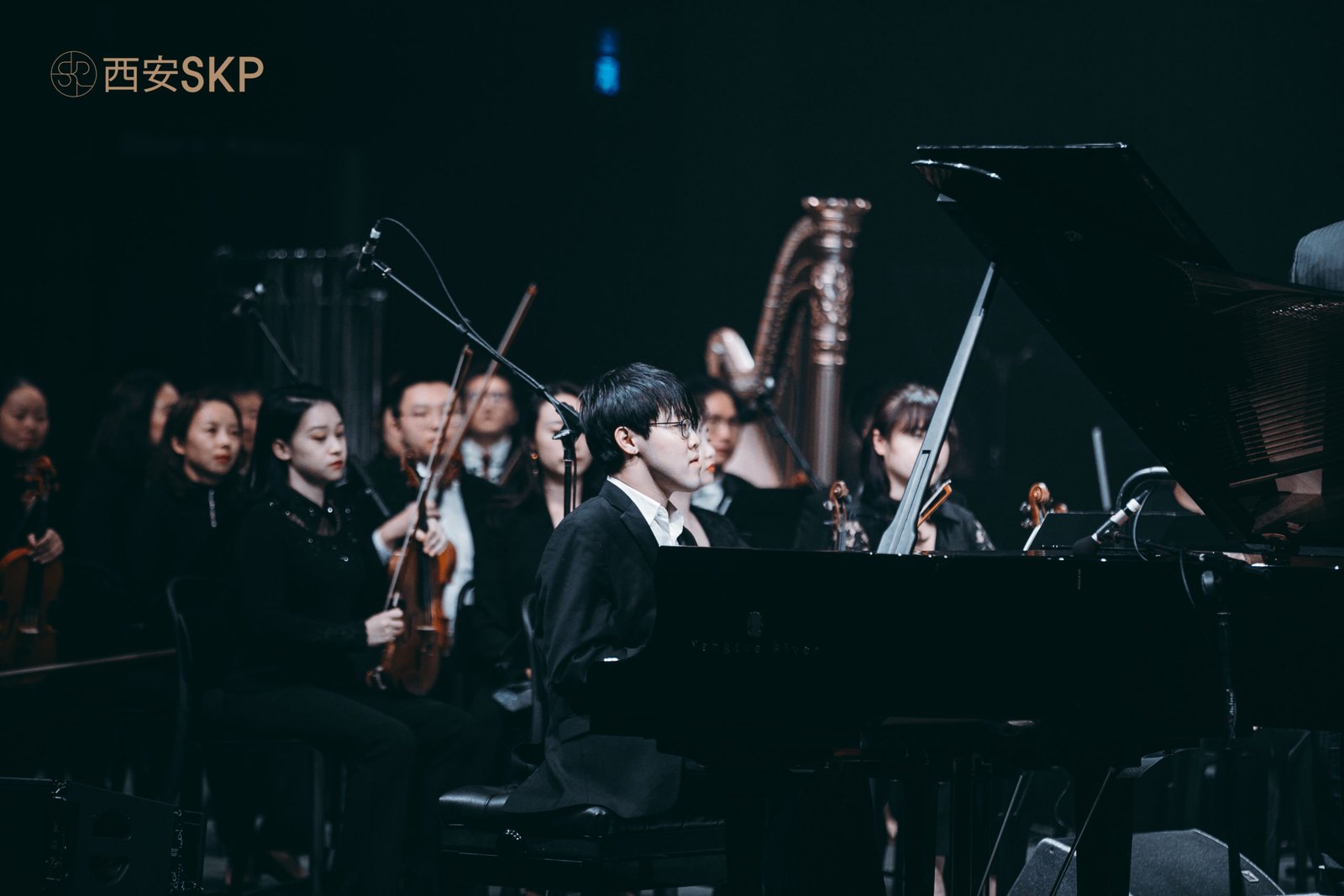SKP New Year 2020
SKP is a luxury Chinese shopping complex / mall based in Beijing and Xi’an. In November SKP approached Jason Bruges Studios to assist in forging an spatially immersive lighting installation which would be a key part of their New Year 2020 concert. I worked within a small team to ensure that this project could be delivered by the event day. I worked along side the project manager / lead designer – Huajing Liu, as well as along side the lead lighting animator for this project – Adam Heslop. My job was system design engineer, making sure that all the system that we specified would work smoothly on site, as well as creating any custom software which was needed for this project.
This project was a unique lighting project since all the lights were animated out of Cinema4D using Adam Heslop’s PIP plugin. This allowed him to easily animate the lighting positions and attributes of all 64 moving head lights along a timeline. The animation was then converted to down to artnet packets, and those artnet packets then sampled into a video file – where each pixel represented a single DMX channel.
We used Disguise / D3 server to play back the content which we had created. In the same way that we would map video onto a monochrome LED wall, we used the same setup where it samples each pixel and then outputs the luminosity of each pixel via sACN to a GrandMA2 – which allows use to then map the data onto the fixtures. Having the GrandMA2 in the chain allowed us to have some flexibility over the top when it came to lamping on the fixtures, and adding any effects over the top of the already pre-baked content.
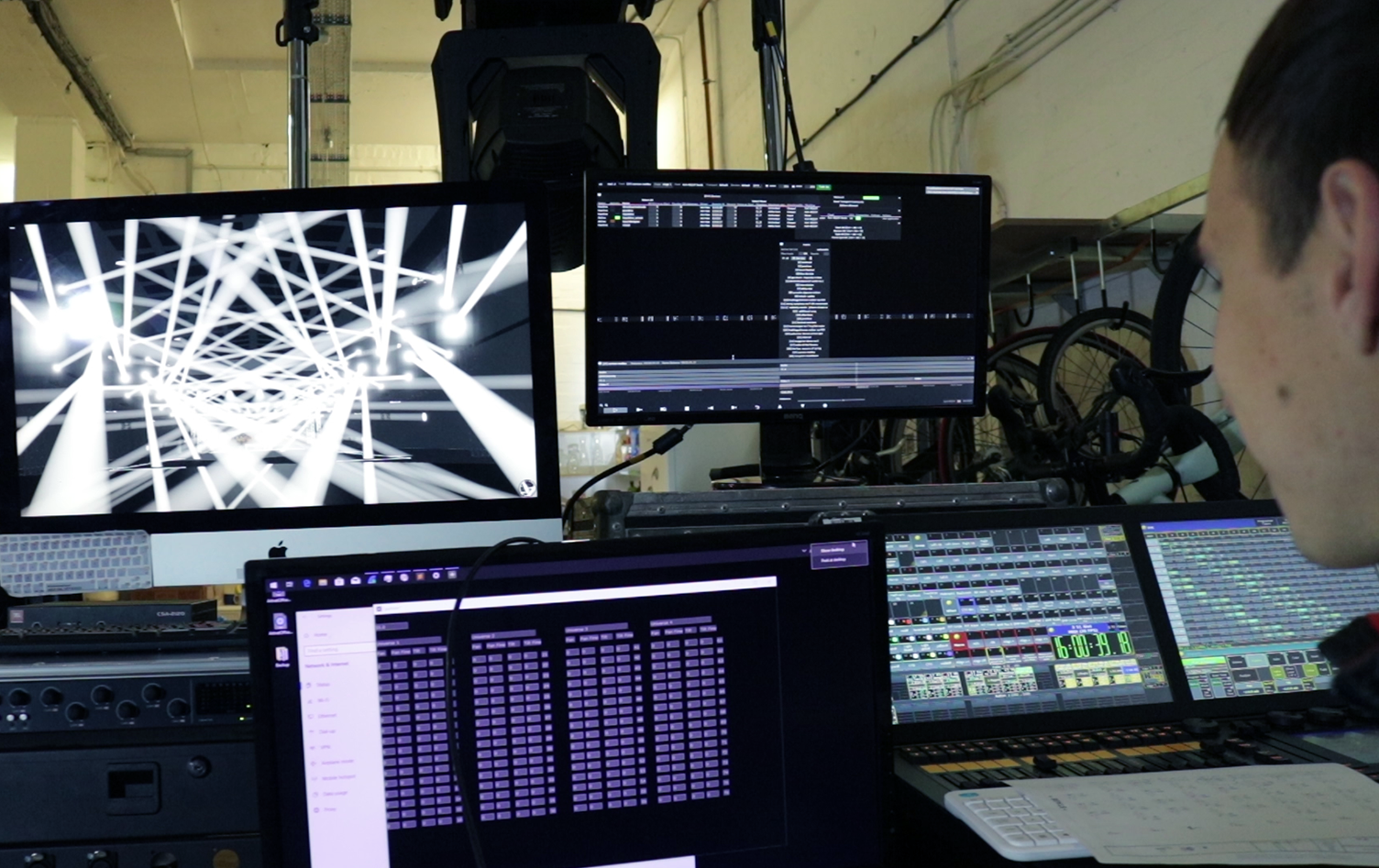
Each DMX universe was then sent via Artnet Unicast to a TouchDesigner file I create which ensured that all fixtures’ pan and tilt had the correct calibration values before being sent to the Artnet nodes feeding the installation. The TouchDesigner file allowed us to live recalibration / realign the fixtures easily via a very simple user interface.

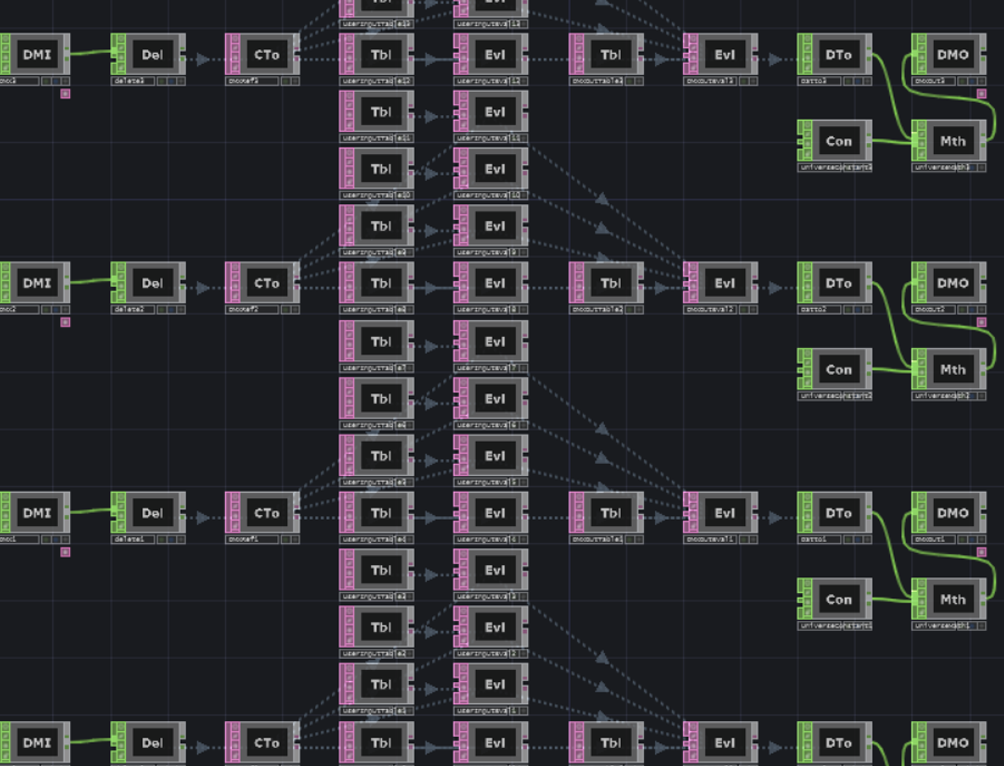
Throughout the pre-production phase, we used Vectorworks Vision to see how the effect which were being created within Cinema4D would look in a close to real life visualisation. I choose to use Vectorworks Vision on this project because Vision allowed for a quick update of the model when I changed something in Vectorworks, as well as vision having the correct positioning for the lights when compared to how they acted in real life – other visualisers did not.
Photos courtesy of Jason Bruges Studios and SKP China
